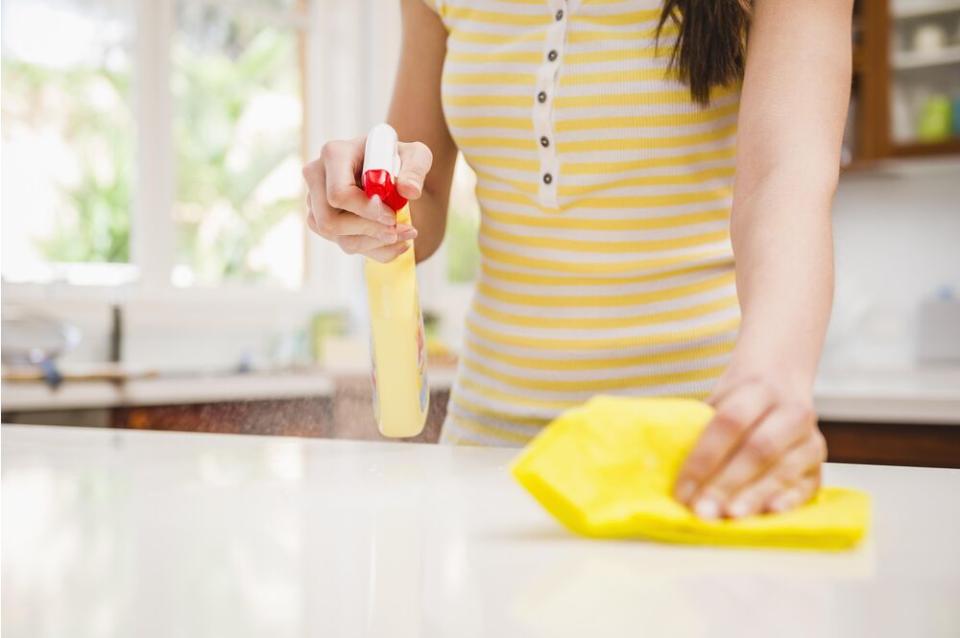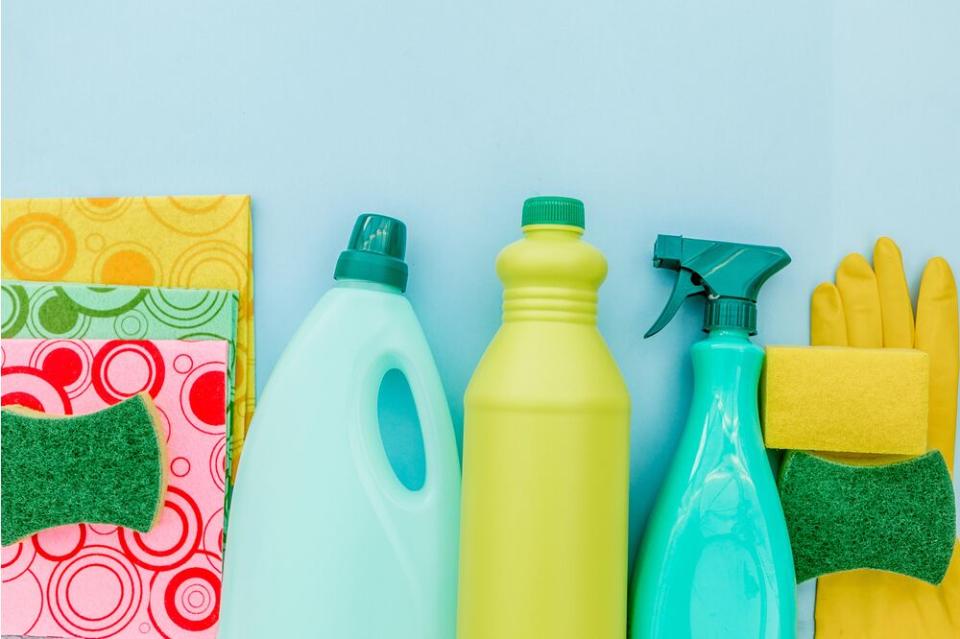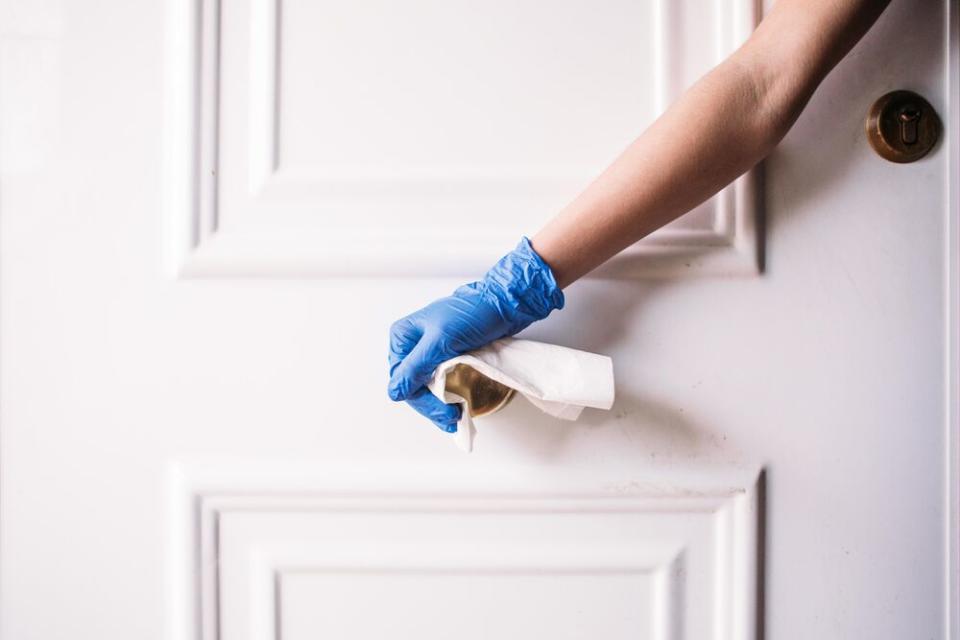Does Bleach Kill the Coronavirus?
Yes, bleach can be effective against COVID-19 (if it’s used properly). It’s important to keep your home and frequently touched objects clean during this unprecedented pandemic, but it’s not the only measure you should take to keep yourself and others safe. Here’s what you need to know about protecting yourself and disinfecting with bleach:
What Is COVID-19—and How Can You Avoid It?
%image1
Coronaviruses are a family of viruses that can cause illnesses ranging from the common cold to SARS (Severe Acute Respiratory Syndrome).
COVID-19, the disease caused by the 2019 novel coronavirus outbreak, refers to a new strain of the virus. Common COVID-19 symptoms include coughing, fever, and shortness of breath.
As you likely know by now, COVID-19 has impacted the world—at least temporarily—in a number of important ways. You can do your part to stop the spread of the disease by following these safety measures:
Follow CDC guidelines for social distancing. Only venture to public places when necessary, like to buy groceries or to go to the doctor. If you’re sick, avoid interacting with anyone unless you are receiving medical care.
Wear a mask. Wearing a cloth face covering is one of the easiest things you can do to slow the spread of COVID-19 and to protect the people around you. Read more about the importance of masks here.
Wash your hands thoroughly with soap and water often. This is especially important after you’ve been in a public place. If you don’t have immediate access to soap and water, use an alcohol-based hand sanitizer.
Avoid touching your face with unwashed hands.
Cover your mouth with a tissue or the inside of your elbow when you cough or sneeze.
Disinfect frequently touched objects (like doorknobs, kitchen counters, tables, light switches, telephones, etc.) daily.
Monitor your health daily. Be alert for symptoms and check your temperature if you feel unwell. If symptoms do develop, follow CDC guidelines for what to do next. Remember, though, you can still spread COVID-19 if you feel fine—so follow proper procedures even if you don’t have symptoms.
Read more: 7 Places in Your Kitchen You Need to Disinfect During the Coronavirus Outbreak
Does Bleach Kill the Coronavirus?

Bleach can be effective against COVID-19—but it’s important to make sure you use it properly and on appropriate surfaces.
“Follow manufacturer’s instructions for application, ensuring a contact time of at least 1 minute, and allowing proper ventilation during and after application,” according to the CDC. “Check to ensure the product is not past its expiration date. Never mix household bleach with ammonia or any other cleanser. Unexpired household bleach will be effective against coronaviruses when properly diluted.”
Note: Bleach is effective when used as a cleaning agent. It is absolutely not appropriate for consumption. Drinking bleach can kill you. No matter what you may have heard, there is no evidence that consuming bleach affects the coronavirus. However, there is a ton of evidence that consuming bleach can be harmful or fatal. Read more about the serious consequences associated with drinking bleach here.
How to Dilute Bleach

To reiterate, the CDC says unexpired bleach can kill COVID-19 when properly diluted. That means you shouldn’t pour bleach directly onto the surface you hope to disinfect—you need to add some water first. Fortunately they’ve provided some handy measurements to help you get the ratios right. To dilute bleach properly, mix:
5 tablespoons (1/3 cup) bleach per gallon of room temperature water OR
4 teaspoons bleach per quart of room temperature water
Related: Does Lysol Kill the Coronavirus?
Can You Mix Bleach With … ?

One extremely important thing to remember if you’re using bleach to disinfect your home: When mixed with certain chemicals, bleach can create dangerous toxic gases.
Never, under any circumstances, mix bleach with:
Rubbing alcohol. Ethanol and bleach create chloroform, a colorless and sweet-smelling organic compound that can cause "sudden sniffer's death” (a fatal cardiac arrhythmia some people experience when exposed). Symptoms of chloroform exposure are irritation of eyes, skin, and respiratory symptoms; dizziness; fainting; and damage to nervous system, eyes, lungs, skin, liver, and kidneys.
Ammonia. Here’s another could-be fatal combination. Ammonia, which creates toxic gases called chloramines when mixed with bleach, is present in glass and window cleaners, as well as other common household cleaners. Symptoms of chloramine exposure are burning of the eyes, nose, and throat; coughing; wheezing; shortness of breath; chest tightness; and potentially deadly pulmonary edema (fluid build-up in lungs).
Vinegar. These common household cleaners produce toxic chlorine gas when used together. Chlorine gas is invisible in the air, so it’s only detectable by its strong scent and the side effects you experience. Symptoms of chlorine gas exposure are burning eyes, nose, and throat; burning, reddening, and blistering of the eyes and skin; difficulty breathing; chest tightness; nausea and vomiting; and potentially deadly pulmonary edema (fluid build-up in lungs).
If you’ve accidentally created a toxic gas, remove yourself from the area immediately and seek fresh air. Remove and dispose of your clothes, wash with soap and water, and seek medical attention ASAP. You can call Poison Control at 1-800-222-1222.
Find a detailed list of EPA-approved disinfectants here.

